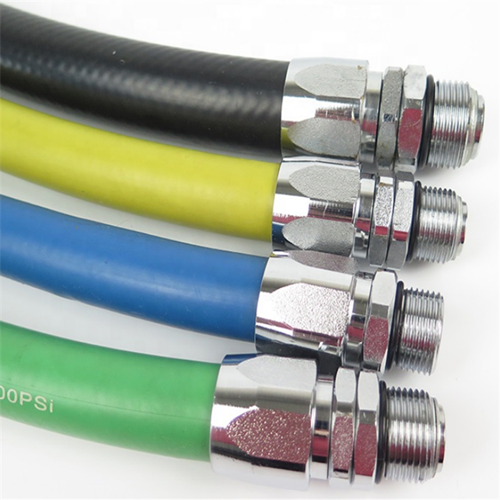335345435
Nov . 07, 2024 21:39 Back to list
A Comprehensive Guide to Various Types of Hose Fittings and Their Applications
Understanding Hose Fittings Types A Comprehensive Overview
Hose fittings are crucial components in a variety of industries, from agriculture and construction to automotive and manufacturing. They play a vital role in connecting hoses to various equipment, ensuring that fluids can flow safely and efficiently through a system. With a plethora of designs and materials available, it’s important to understand the different types of hose fittings to select the right one for your specific needs.
1. Types of Hose Fittings
Hose fittings can be categorized based on several factors, including connection types, design, and application. The most common types include
- Barbed fittings These are the simplest form of hose fittings. They feature a raised rib or barbed section that grips the hose when it is pushed onto the fitting. Barbed fittings are generally made of plastic or metal and are best used with hoses that are rigid enough to maintain a seal but flexible enough to accommodate the fitting’s barbs.
- Threaded fittings These fittings have male and female threads that screw together to create a secure connection. Common types include NPT (National Pipe Thread), which is tapered, and BSP (British Standard Pipe), which is parallel. Threaded fittings are required when a more permanent or secure connection is necessary and are available in various materials, including brass, stainless steel, and plastic.
- Quick disconnect fittings As the name suggests, these fittings allow users to quickly connect and disconnect hoses without tools. They are essential in applications where ease of use and efficiency are paramount, such as in automotive shops or for hydraulic systems. Quick disconnect fittings come in various configurations, including couplings, plugs, and sockets.
- Push-to-connect fittings These fittings simplify the connection process even further. The hose is simply pushed into the fitting, where an internal mechanism grips the hose for a secure seal. Push-to-connect fittings are often used in pneumatic applications and are favored for their ease of use and reliability.
hose fittings types pdf

The material of hose fittings is equally important. Common materials include
- Plastic Lightweight and resistant to corrosion, plastic fittings are ideal for water and low-pressure applications. However, they may not be suited for higher temperature or pressure environments.
- Brass Known for its durability and resistance to corrosion, brass is commonly used in plumbing and automotive applications. It can withstand higher pressures than plastic fittings, making it a versatile choice.
- Stainless steel Offering the best corrosion resistance and strength, stainless steel fittings are preferred for high-pressure and high-temperature applications, such as in oil and gas industries.
- Aluminum Lightweight yet strong, aluminum fittings are often used in applications where weight is a critical factor. They offer good resistance to corrosion but may not perform as well in extremely high-pressure situations.
3. Applications and Selection
Selecting the appropriate hose fitting depends on various factors, including the type of fluid being transported, the pressure and temperature conditions, and the specific application environment. Compatibility is essential; mismatched fittings can lead to leaks, failures, or even hazardous conditions.
In conclusion, understanding the different types of hose fittings and their appropriate applications is essential for anyone working with fluid systems. By considering the types of fittings available, their materials, and the specific requirements of your project, you can ensure a safe and efficient connection that will meet your needs for years to come. Whether you are dealing with a simple garden hose or complex industrial machinery, the right hose fitting is key to maintaining fluid management systems effectively and reliably.
-
SAE 100 R17 Black Smooth Cover Hydraulic Hose
NewsMar.07,2025
-
SAE 100 R17 Black Smooth Cover Hydraulic Hose
NewsMar.07,2025
-
SAE 100 R17 Black Smooth Cover Hydraulic Hose
NewsMar.07,2025
-
SAE 100 R17 Black Smooth Cover Hydraulic Hose
NewsMar.07,2025
-
SAE 100 R17 Black Smooth Cover Hydraulic Hose
NewsMar.07,2025
-
steel wire braided hydraulic hose
NewsMar.07,2025



